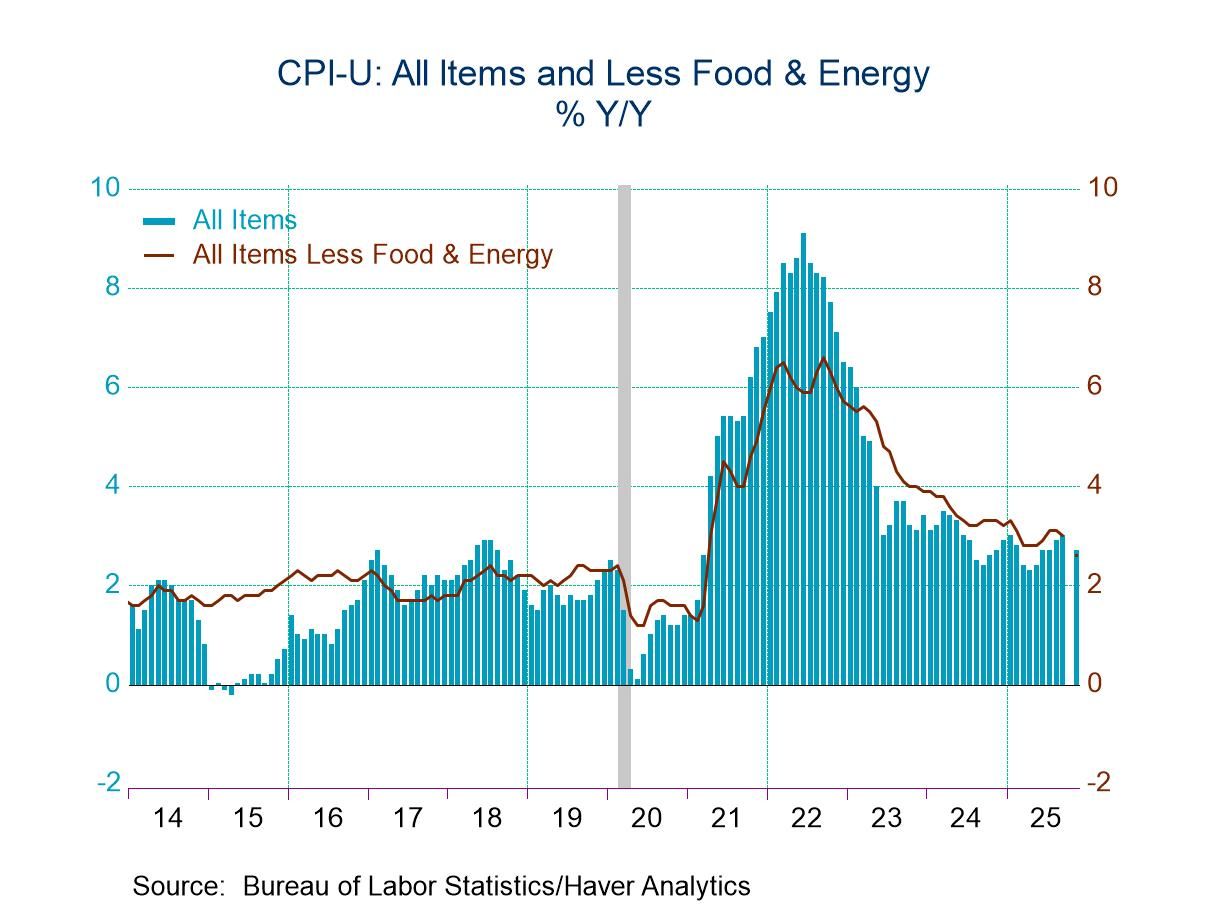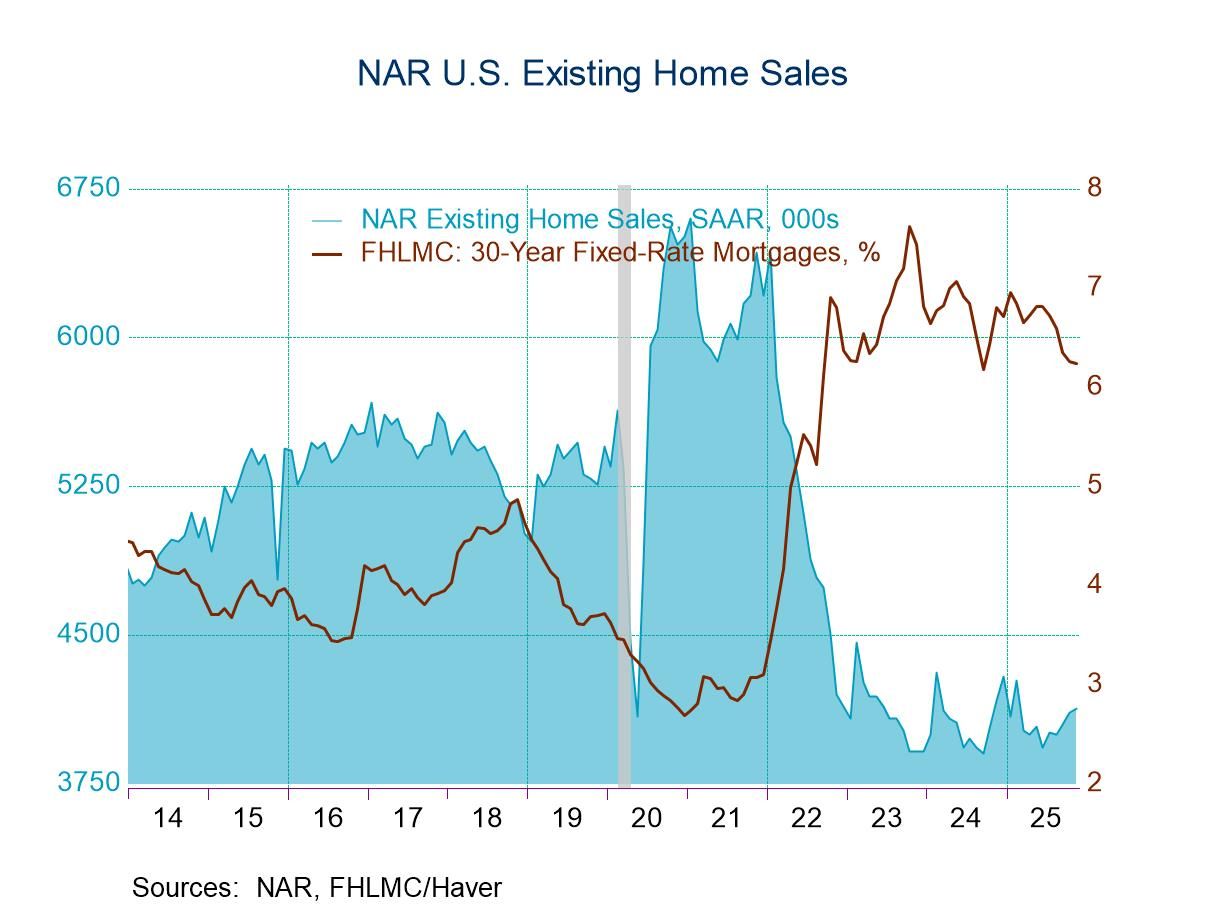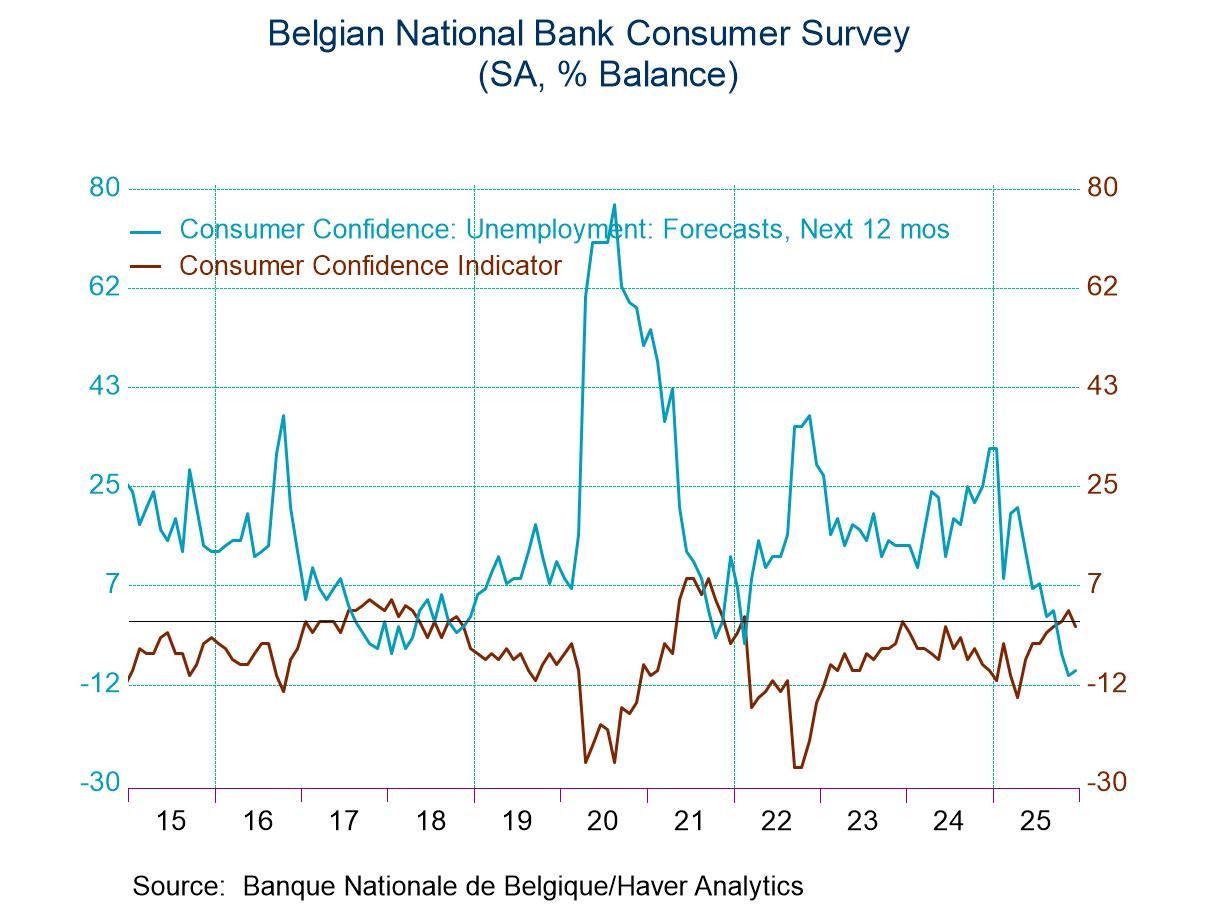 Global| Nov 04 2024
Global| Nov 04 2024MFG PMIs from S&P Stagnate

On the month, 7 of 18 countries reported weaker manufacturing PMI results than they had the month before. However, the median on a month-to-month basis didn't change at all. Sequentially looking at averages over 12 months, six months and three months, we see the median hasn't changed very much across that span either. It has stayed just below the value of 50, which indicates unchanged output, oscillating between values of 49.6 and 49.7. That's a great deal of consistency for these averages over these three different multi-month segments. All this as global trade growth has come to a halt according to the Baltic trade volume index.
The bottom line is that there isn't really a lot of trend in these overall data and the conditions of economic weakness remain in force although it's weakness of the mildest sort, technically below the value of 50 but - for the most part – these are numeric figures that would round up to a value of 50!
The queue percentile standings show that among these 18 observations, only 6 have values above their historic medians; that would refer to any queue percentile standing value of about 50%. The average percentile standing across all 18 reporting units is at 48.6, again fairly close to breakeven; however, the median value is only at 36.8% - the median is significantly weaker than the average.
As a group, the strongest reporters are the ‘BRIC’ reporters, with queue percentile standings at 54.4% for China, 35.1% for Russia, 73.7% for India, and 61.4% for Brazil. The weakest reporters in the table are Turkey at a 7% standing, France at a 17.5 percentile standing and Indonesia and a 19.3 percentile standing.
Looking at changes since January 2020 when COVID began to emerge, ten of the 18 reporters have even weaker values today than they had in January 2020 while the strongest reporters are Russia 2.7 points higher, India 2.2 points higher, and Brazil 1.9 points higher. No other country has a gain relative to January 2020 any stronger than 0.7 points.
Looking at the breadth of improvement, 66.7% improving compared to where they were 12-months ago; we see 38.9% improving over six months compared to over 12 months and 27.8% improving over three months compared to six months ago. This trend is unnerving, showing smaller, and smaller, proportions of reporters that are doing better than they had been doing over the previous period. And this is not good news even though the diffusion median value hasn't changed very much nor have the various period averages.
Little change month-to-month; worsening in 7 of 18 reporting units

The global scene Manufacturing globally is simply struggling, and it may still be a legacy effect from the COVID when service sectors had been shut down and demand was funneled into the goods sector encouraging overproduction and inventory building. However, in the wake of COVID, there's also been more creeping protectionism, and of course, there have been wars in place with sanctions accompanying these wars where the sanctions contribute substantially to trade restrictions. Now it's a complicated picture of a global economy where special entanglements are deleterious to the pursuit of growth.
In the S&P format, the U.S. shows a slight improvement in manufacturing in October compared to its September PMI. However, the sequential 12-month, 6-month, and 3-month averages mark an ongoing slowdown. In the euro area, there's also a pickup in October compared to September. The euro area marks a small slowdown over three months compared to six months even though 6-months improved relative to 12-months. The euro area 3-month average PMI reading is still below its 12-month average PMI reading. Global growth progress is slow against a strong current.
In short, the PMI data results are not very uplifting and don't contribute to a view of better growth or very much to a view of lessened price pressures since the weak conditions continue to skim only slightly below the breakeven level. There isn't enough slack being created to have much effect on prices anywhere. In some sense, the S&P global manufacturing report for October has no good news for anyone.
Robert Brusca
AuthorMore in Author Profile »Robert A. Brusca is Chief Economist of Fact and Opinion Economics, a consulting firm he founded in Manhattan. He has been an economist on Wall Street for over 25 years. He has visited central banking and large institutional clients in over 30 countries in his career as an economist. Mr. Brusca was a Divisional Research Chief at the Federal Reserve Bank of NY (Chief of the International Financial markets Division), a Fed Watcher at Irving Trust and Chief Economist at Nikko Securities International. He is widely quoted and appears in various media. Mr. Brusca holds an MA and Ph.D. in economics from Michigan State University and a BA in Economics from the University of Michigan. His research pursues his strong interests in non aligned policy economics as well as international economics. FAO Economics’ research targets investors to assist them in making better investment decisions in stocks, bonds and in a variety of international assets. The company does not manage money and has no conflicts in giving economic advice.






